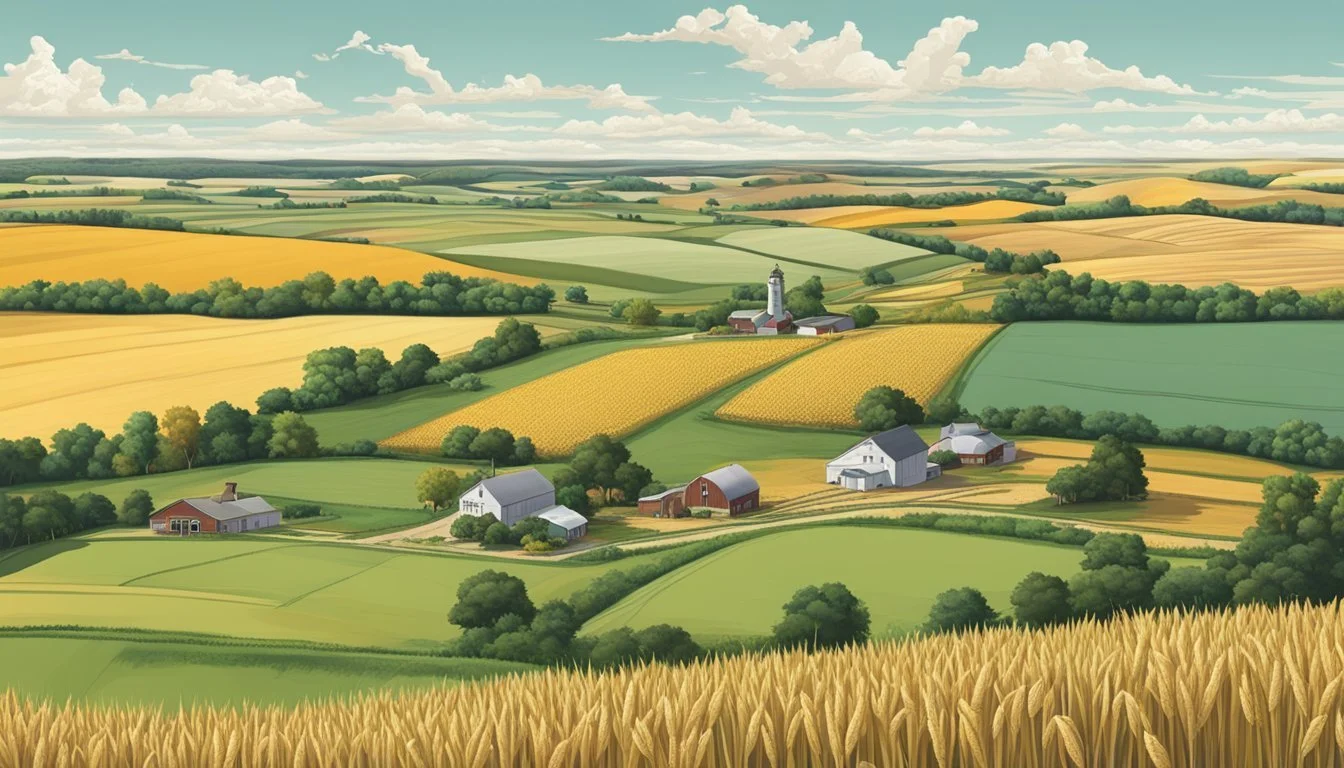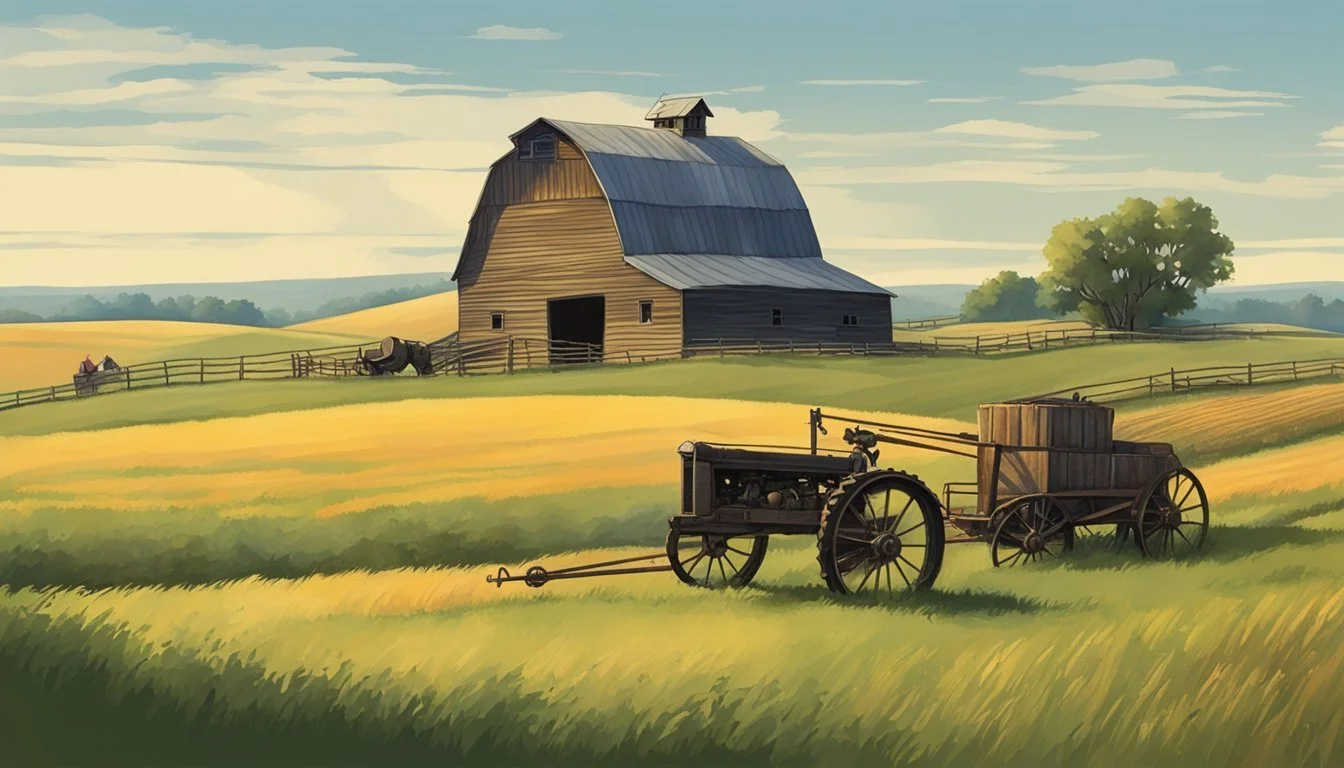Historical Farms and Agricultural Museums in Nebraska
A Guide to Rustic Heritage
Nebraska's rich agricultural heritage is encapsulated within its historical farms and agricultural museums. These institutions serve as cultural reservoirs, preserving the state's extensive agrarian history and offering an educative glimpse into the lives of early settlers and generations of farmers. Places like the Legacy of the Plains Museum provide visitors with a tangible connection to the Oregon Trail era, featuring a robust collection of pioneer artifacts, antique farming equipment, and even an operational 80-acre farm.
The Stuhr Museum complements this narrative by delivering a dynamic living history experience that deepens the comprehension of Nebraska's past and its influence on the present and future. With a mission to educate through interaction, visitors at sites such as the Wessels Living History Farm can engage in activities like shelling corn or gathering eggs that convey the nuances of farm life in bygone days.
Each museum plays a pivotal role in preserving Nebraska's cultural and historical legacy. They do not merely act as repositories of the past but function as vibrant educational centers, where the stories of the Nebraska prairie are relived and remembered. These institutions ensure that the state’s agrarian roots remain in the collective consciousness, allowing individuals of all ages to appreciate the toil and triumphs that shaped the region.
History of Agriculture in Nebraska
Nebraska’s rich agricultural heritage dates back to its indigenous tribes and extends through the Homestead Act era, leaving a legacy captured in its agricultural museums.
Native American Agricultural Practices
Before European settlement, Native American tribes in the Nebraska region, such as the Pawnee, were engaged in sophisticated farming practices. They cultivated crops including corn, beans, and squash, using tools like digging sticks and hoes made from bison (What wine goes well with bison?) shoulder blades. Their agricultural knowledge influenced the crop varieties and farming methods in later periods.
Homestead Act and Settler Expansion
The pivotal Homestead Act of 1862 invited settlers, including many pioneers, to put down roots in Nebraska. They could claim 160 acres of public land, and after five years of continuous residence, they would own it. This act significantly accelerated Nebraska's agricultural development as families flocked from the East and abroad, shaping the "Wild West" landscape into productive farms.
Development of Agricultural Museums
In recognition of Nebraska’s agricultural past, museums such as the Stuhr Museum of the Prairie Pioneer and the Wessels Living History Farm have been established to preserve and educate about this history. These institutions showcase the story of Nebraska’s pioneers and illustrate the evolution of farming from the early Native American practices to modern day. Through exhibits and living history farms, visitors can gain a deeper understanding of Nebraska’s agricultural roots.
Prominent Historical Farms in Nebraska
Nebraska's agricultural heritage is celebrated through various historical farms and museums that preserve and showcase the state's rich past. These institutions offer a window into the pioneering days, illustrating the transformation of the Great Plains through the display of historic farm equipment, clothing, and daily life artifacts.
Willa Cather Pioneer Memorial and Educational Center
Located in Red Cloud, the Willa Cather Pioneer Memorial and Educational Center is a tribute to one of Nebraska's most famed authors. The center immortalizes the cultural legacy of the pioneers who settled the Nebraska prairies, with the preservation of Cather's childhood home and other historic buildings. Visitors can explore period clothing, furniture, and personal belongings that offer insights into the pioneer era.
Stuhr Museum of the Prairie Pioneer
The Stuhr Museum of the Prairie Pioneer in Grand Island encapsulates Nebraska's pioneering spirit through its dedication to preserving the stories and artifacts of early settlers. The museum includes a living history farm representative of the 1890s, providing an immersive experience with hands-on activities and historic reenactments. By showcasing tractors and other farm implements of the past, the museum paints a vivid picture of agricultural progress in Nebraska.
Key Agricultural Museums and Collections
Nebraska offers a wealth of museums that preserve and interpret the state's agricultural heritage. Visitors can explore extensive collections and exhibits that recount the historical and cultural significance of farming in Nebraska.
Nebraska History Museum
The Nebraska History Museum boasts a comprehensive collection that brings to life the cultural and historical narrative of Nebraska. Visitors can engage with a wide array of artifacts that represent the rich tapestry of the state's history. This museum, operated by History Nebraska, provides a vital connection to the past through curated exhibitions and educational programs.
Legacy of the Plains Museum
Legacy of the Plains Museum stands out for its expansive displays that chronicle the farming and pioneer history of the High Plains. The museum's interactive exhibits and preserved artifacts offer a glimpse into the agricultural methods and lifestyle of Nebraska's early settlers. As an institution committed to living history, it connects visitors with the agricultural roots of the region.
Notable Associations:
Association for Living History, Farm and Agricultural Museums (ALHFAM): This organization serves a network of professionals and institutions, including Nebraska's historical farms and museums, dedicated to preserving rural history and promoting best practices in living historical interpretations.
Prominent Institutions Not Covered:
Webster County Historical Museum: While not detailed here, it is an important repository of agricultural memorabilia, epitomizing the blend of culture, history, and community spirit within Nebraska.
Larsen Tractor Museum is also a treasure trove of historical tractors and agricultural machinery, showcasing technological advancements over time.
Terms Associated:
The term 'museum' is closely tied to these establishments as they serve as guardians of Nebraska's agricultural past.
'Collection' refers to the carefully curated artifacts within these institutions, offering insight into the 'history' and 'culture' of rural Nebraska.
'ALHFAM' is relevant to this discussion as it underscores the collaborative efforts in preserving 'farm and agricultural museums' across the United States, including Nebraska.
The keyword 'AIM' (Agriculture in the Classroom), while not explicitly detailed in this section, is an initiative that often collaborates with museums to educate about agricultural history.





